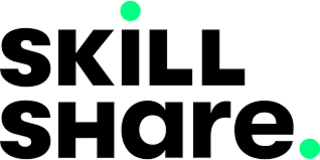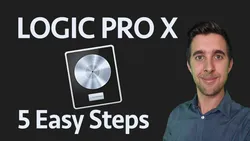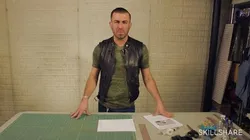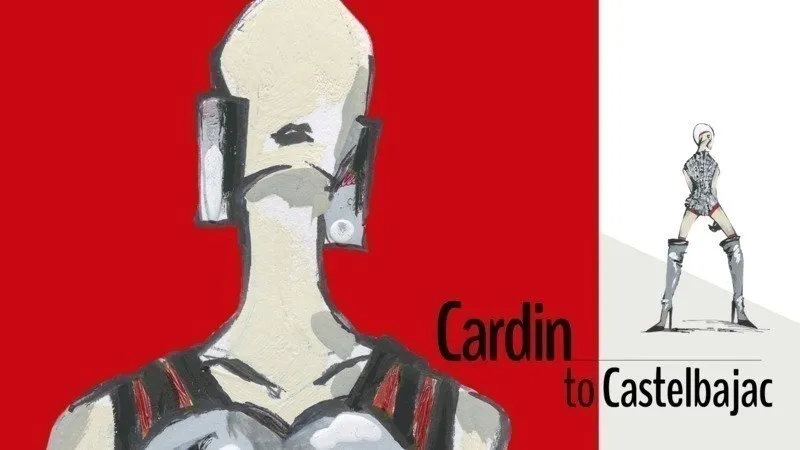
Pattern Making - How To Create A Sloper&Block From Scratch - Fashion 
This course provides an introduction to pattern making, teaching students how to create a sloper/block from scratch. It covers taking measurements, plotting the grid, adding darts and shaping, outlining the sloper/block onto a mannequin, and draping the sloper/block. Students will gain the skills to create a sloper/block that can be used as a base for any garment. ▼
ADVERTISEMENT
Course Feature
![]() Cost:
Cost:
Free Trial
![]() Provider:
Provider:
Skillshare
![]() Certificate:
Certificate:
No Information
![]() Language:
Language:
English
![]() Start Date:
Start Date:
On-Demand
Course Overview
❗The content presented here is sourced directly from Skillshare platform. For comprehensive course details, including enrollment information, simply click on the 'Go to class' link on our website.
Updated in [February 21st, 2023]
(Please note the following content is from the official provider.)
Course Outline:
1) Intro
2) Taking measurements and plotting the grid
3) Plotting the grid
4) Adding darts and shaping to the sloper/block
5) Outlining sloper/block onto mannequin
6) Draping the sloper with fabric part 1
7) Draping the sloper with fabric part 2
8) Marking up your fabric sloper PART 1
9) Marking up your fabric sloper PART 2
10) Removing sloper from mannequin
11) Transferring the sloper onto paper part 1
12) Transferring the sloper onto paper part 2
13) Transferring sloper onto card part 1
14) Transferring sloper onto card part 2
We will cover:
- Pattern cutting basics.
- Taking measurements and plotting these on a grid to start block building
- Block/Sloper construction by flat pattern making.
- Block/Sloper construction by draping calico onto a mannequin, markin it up and taking a pattern from this
- Block/Sloper construction by draping on a mannequin/dress form.
- Introducing you to blocks and slopers (the tools of the trade).
- Basic garment construction.
Course Requirements:
You should come with a passion to learn pattern making or a basic knowledge to learn more.
All of the lectures are delivered by video. The content is a fabulous introduction to the wonderful world of Pattern Cutting & Making. Which is the key skill in garment making. At the end of the course you will be ready to move forward in your pattern cutting journey.
This course is designed for:
- Fashion students
- Industry professionals
- Pattern Cutters and Makers
- Hobbyists
- Fashion enthusiasts
Equipment you will need is:
Pencil, Ruler, Rubber, Calculator, Measuring tape, Pattern paper, Notcher, Tracing wheel, Card optional
(Please note that we obtained the following content based on information that users may want to know, such as skills, applicable scenarios, future development, etc., combined with AI tools, and have been manually reviewed)
This course is about Pattern Making - How To Create A Sloper&Block From Scratch - Fashion. It covers topics such as pattern cutting basics, taking measurements and plotting these on a grid to start block building, block/sloper construction by flat pattern making, block/sloper construction by draping calico onto a mannequin, markin it up and taking a pattern from this, block/sloper construction by draping on a mannequin/dress form, and basic garment construction.
This course is designed for fashion students, industry professionals, pattern cutters and makers, hobbyists, and fashion enthusiasts. It is a great introduction to the world of pattern cutting and making, and by the end of the course, learners will be ready to move forward in their pattern cutting journey.
Possible Development Paths include becoming a fashion designer, pattern maker, or garment technician. Learners can also pursue further education in fashion design, pattern making, or garment construction.
Learning Suggestions for learners include researching the basics of pattern making, such as the different types of patterns, the tools used in pattern making, and the different techniques used in pattern making. Learners can also practice taking measurements and plotting grids, as well as draping fabric on a mannequin or dress form. Additionally, learners can practice transferring patterns onto paper or card.
[Applications]
Participants will be able to apply their knowledge of pattern making to create a sloper and block from scratch. They will be able to take measurements and plot them on a grid, add darts and shape the sloper/block, drape the sloper with fabric, mark up the fabric sloper, transfer the sloper onto paper and card, and understand basic garment construction. Participants will also have the skills to move forward in their pattern cutting journey.
[Career Paths]
The three to four career paths recommended to learners of this course are:
1) Pattern Maker: Pattern makers are responsible for creating patterns for garments based on the designs of fashion designers. They use their knowledge of pattern making and garment construction to create patterns that are accurate and precise. Pattern makers must be able to interpret the designer's vision and create a pattern that will result in a garment that looks and fits as intended. Pattern makers must also be able to work with a variety of fabrics and materials. This job is expected to grow in the coming years as the demand for fashion designers increases.
2) Garment Technologist: Garment technologists are responsible for ensuring that garments are produced to the highest quality standards. They work with designers, pattern makers, and manufacturers to ensure that garments are produced according to the designer's specifications. Garment technologists must have a strong understanding of garment construction, fabric selection, and quality control. This job is expected to grow in the coming years as the demand for fashion designers increases.
3) Fashion Designer: Fashion designers are responsible for creating clothing and accessories that are fashionable and stylish. They must be able to interpret the trends of the season and create garments that are both fashionable and functional. Fashion designers must have a strong understanding of pattern making, garment construction, and fabric selection. This job is expected to grow in the coming years as the demand for fashion designers increases.
4) Textile Designer: Textile designers are responsible for creating fabrics and textiles for use in clothing and accessories. They must be able to interpret the trends of the season and create fabrics that are both fashionable and functional. Textile designers must have a strong understanding of fabric construction, dyeing, and printing techniques. This job is expected to grow in the coming years as the demand for fashion designers increases.
[Education Paths]
Recommended Degree Paths:
1) Bachelor of Science in Fashion Design: This degree program provides students with the knowledge and skills needed to design and create clothing and accessories. Students learn about the history of fashion, design principles, and the latest trends in the industry. They also learn about pattern making, fabric selection, and garment construction. This degree program is ideal for those who want to pursue a career in fashion design.
2) Master of Science in Textile and Apparel Design: This degree program focuses on the design and production of textiles and apparel. Students learn about the history of textiles, the principles of design, and the latest trends in the industry. They also learn about pattern making, fabric selection, and garment construction. This degree program is ideal for those who want to pursue a career in textile and apparel design.
3) Master of Science in Fashion Technology: This degree program focuses on the use of technology in the fashion industry. Students learn about the history of fashion, the principles of design, and the latest trends in the industry. They also learn about pattern making, fabric selection, and garment construction. This degree program is ideal for those who want to pursue a career in fashion technology.
4) Master of Science in Fashion Merchandising: This degree program focuses on the business side of the fashion industry. Students learn about the history of fashion, the principles of design, and the latest trends in the industry. They also learn about marketing, retailing, and merchandising. This degree program is ideal for those who want to pursue a career in fashion merchandising.
Developing Trends:
1) Sustainable fashion: Sustainable fashion is becoming increasingly popular as consumers become more aware of the environmental impact of the fashion industry. Sustainable fashion focuses on using materials that are eco-friendly and produced in a way that is ethical and sustainable.
2) Digital fashion: Digital fashion is becoming increasingly popular as technology advances. Digital fashion focuses on using technology to create innovative designs and products.
3) Customization: Customization is becoming increasingly popular as consumers become more interested in creating unique and personalized products. Customization focuses on using technology to create custom designs and products.
4) Smart fabrics: Smart fabrics are becoming increasingly popular as technology advances. Smart fabrics focus on using technology to create fabrics that are interactive and responsive to the environment.
Pros & Cons

Professional-level refresher.

Excellent job demonstrating and explaining each step.

Helped reengage unused skills.

Not enough tips for different body shapes.

No quick reply for clarification.

Not enough examples.
Course Provider

Provider Skillshare's Stats at AZClass
Discussion and Reviews
0.0 (Based on 0 reviews)
Explore Similar Online Courses

Spark AR Studio for Beginners: Create Your Own Filters for Instagram and Facebook

Music Production in Logic Pro X in 5 Easy Steps - Beginners Starter Guide!

Python for Informatics: Exploring Information

Social Network Analysis

Introduction to Systematic Review and Meta-Analysis

The Analytics Edge

DCO042 - Python For Informatics

Causal Diagrams: Draw Your Assumptions Before Your Conclusions

Whole genome sequencing of bacterial genomes - tools and applications

Make Your Own Clothing: Introduction to Garment Construction

Gaultier to Louboutin: Style & Strategy in French Fashion


Start your review of Pattern Making - How To Create A Sloper&Block From Scratch - Fashion